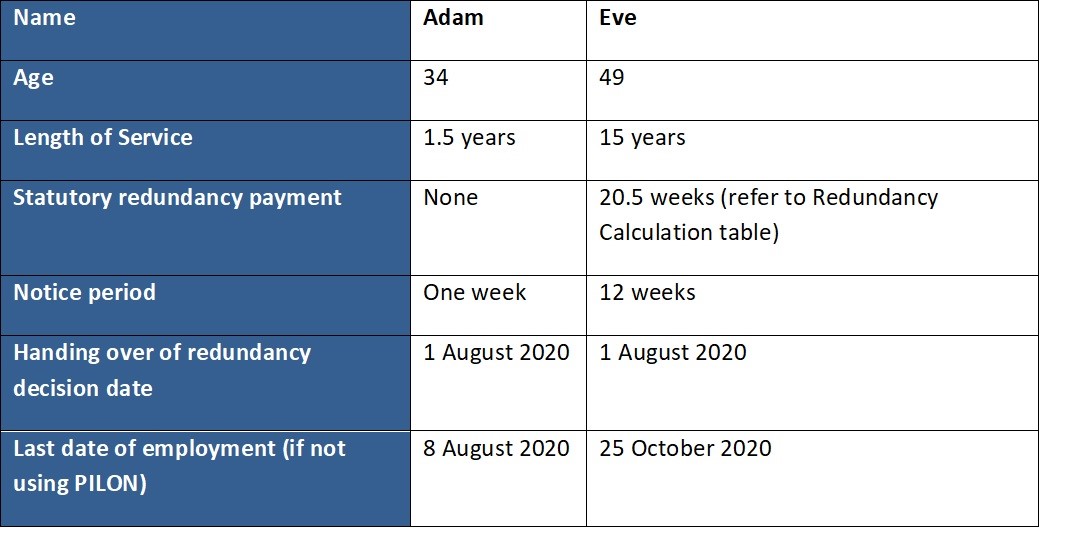What Happens to Redundancy If Company Goes Bust? An Overview to Your Rights
What Happens to Redundancy If Company Goes Bust? An Overview to Your Rights
Blog Article
Checking Out the Interplay Between Firm Redundancy and Business Adaptability for Future Development
In the vibrant landscape of today's business world, the detailed relationship between business redundancy and business flexibility arises as an essential aspect for sustained growth and success. Firms commonly encounter the challenge of striking a fragile equilibrium between preserving a level of redundancy to alleviate dangers and fostering versatility to respond quickly to the ever-evolving market demands.
Relevance of Company Redundancy
Firm redundancy is a critical element that boosts business durability and mitigates functional threats. By incorporating redundancy actions within the business structure, companies can better endure unpredicted disturbances and fluctuations in business setting. Redundancy functions as a critical barrier, permitting business to adapt and respond effectively to unanticipated challenges without jeopardizing crucial operations.
One secret aspect of the value of business redundancy is its function in making sure connection during times of crisis. When encountered with sudden changes or emergency situations, repetitive systems, resources, or workers can tip in to maintain essential features and prevent widespread disturbances. This continuity not only safeguards the business's reputation and customer depend on yet additionally reduces monetary losses and operational downtime.

Strategies for Organizational Versatility

Creating adaptable business frameworks that allow for quick modifications to market dynamics and consumer demands is vital for remaining competitive in a quickly developing setting. By proactively recognizing potential disturbances and opportunities, companies can proactively adjust and grow in an ever-changing business landscape.
Harmonizing Redundancy and Versatility
Accomplishing a harmonious stability between operational redundancy and business versatility is vital in browsing the complexities of a vibrant company environment. Redundancy within a company gives a safeguard, guaranteeing continuity and stability in operations. However, an extra of redundancy can result in ineffectiveness and hinder flexibility to changing market conditions. On the various other hand, business versatility permits companies to respond promptly to exterior disruptions and take brand-new opportunities. Striking the best balance between redundancy and versatility is a fragile procedure that requires a deep understanding of the organization's goals, market dynamics, and threat resistance.
To attain this balance, business need to perform normal evaluations of their operations to recognize areas where redundancy is necessary for risk mitigation and where adaptability can drive development and growth. Carrying out adaptable structures, fostering a society of constant discovering and improvement, and encouraging open interaction across all levels of the company are essential approaches to integrate redundancy and flexibility efficiently. By lining up these two essential elements, firms can place themselves for lasting development and success in an ever-changing business landscape.
Study on Adaptation Success
In taking a look at circumstances of successful organizational adaptation, it ends up being browse around this web-site evident that the interaction in between operational redundancy and adaptability is a specifying factor in shaping durable businesses. One engaging situation study is that of Netflix. Originally a DVD rental solution, Netflix demonstrated impressive adaptability by transitioning right into a streaming go now system when digitalization disrupted the market. By purposefully purchasing modern technology and web content production, Netflix not only endured yet thrived in a quickly advancing market. One more standout instance is Amazon. Starting as an online bookstore, Amazon continuously adjusted its organization design, expanding right into diverse industries such as cloud computer and expert system. This versatility permitted Amazon to remain in advance of competitors and meet transforming consumer needs. Finally, Adobe gives a notable illustration of successful adjustment. The company changed from marketing software program licenses to a subscription-based version, making sure reoccuring income streams and enhanced consumer involvement. These situation researches highlight the relevance of functional redundancy coupled with business versatility in promoting long-term growth and competition.
Structure Durability for Future Development
Building resilience for future development calls for a critical alignment of operational processes with market dynamics and arising trends. Business should adapt to altering settings by promoting a culture of flexibility, technology, and continuous renovation.
Moreover, cultivating solid relationships with stakeholders, such as customers, workers, vendors, and the neighborhood, is vital for keeping and weathering uncertainties trust fund and assistance during unstable times. Efficient communication and openness play an essential role in building durability, as they assist align expectations and facilitate collaboration in browsing uncertainties.
Furthermore, organizations require to prioritize learning and growth campaigns to upskill staff members and equip them with the required tools to adjust to altering conditions. By spending in their labor force, companies can boost their flexibility and dexterity, eventually enhancing their resilience for sustainable future growth.
Conclusion

In the over here vibrant landscape of today's organization world, the complex relationship in between company redundancy and organizational versatility arises as a vital factor for continual development and success. Companies commonly encounter the challenge of striking a fragile equilibrium in between preserving a level of redundancy to mitigate threats and cultivating flexibility to respond quickly to the ever-evolving market needs.To attain this equilibrium, business require to carry out routine analyses of their procedures to determine locations where redundancy is needed for threat mitigation and where flexibility can drive advancement and growth.In final thought, the interplay in between company redundancy and business flexibility is essential for future growth. Structure resilience through a combination of redundancy and adaptability will certainly make sure that companies are prepared for the obstacles of the future.
Report this page